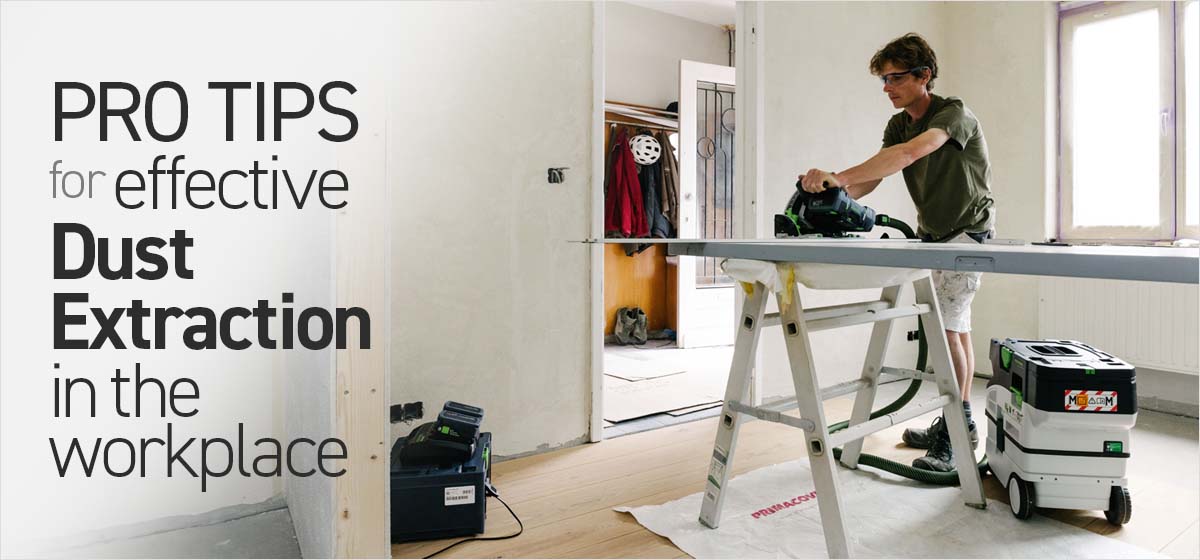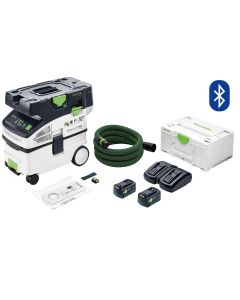
Unleash the power
Dust and debris in the workplace pose a significant airborne hazard for tradespeople. With a few pro tips for effective dust extraction in the workplace, you can prevent the effects of exposure to various types of dust. Respiratory problems, skin irritation, and more can occur as a result of long-term exposure to the dust found in a workshop. Implementing a robust dust extraction strategy is critical in combatting these safety hazards.
DUST EXTRACTORS ARE MORE EFFECTIVE THAN DUST BAGS
While dust bags capture a fair amount of dust and debris, they are not only smaller, so you have to replace them more often, but they also don’t capture the finer dust particles. Dust bags are alright for smaller projects, which won’t expel fine and hazardous dust, but a proper dust extractor is more effective.
Dust extractors have powerful motors and high air-flow rates, which suck the dust up and confine up to 99.995% of the dust to prevent airborne hazards before they spread.


CHOOSE THE CORRECT CLASS DUST EXTRACTOR
You’ll notice that dust extractors come in three classes: L-Class (low-risk), M-Class (medium-risk), and H-Class (high-risk), each designed to handle different types of dust. Wood and concrete are generally classified as low-risk dust, dust which may contain small amounts of carcinogens and pathogens is medium risk, and the dust produced by toxic metals and asbestos is considered high risk.
To protect yourself from the most hazardous dust, it’s best to match your dust extractor to the job at hand.
ALWAYS WEAR PERSONAL PROTECTIVE GEAR
Even with a dust extractor, personal protective gear is essential. An H-Class dust extractor will capture 99.995% of the dust produced, but it’s still best to avoid even the smallest amount of dust.
Items such as dust masks and protective eyewear should never be taken for granted as they provide additional protection. Long hours behind a power tool every day can result in a small accumulation of dust in the eyes and lungs.






REPLACE FILTERS WHEN NECESSARY
The filter in a dust extractor is critical; if it is not replaced regularly, it will become clogged and expose you to the hazardous dust you are trying to avoid. Take care to inspect it regularly and replace it as needed to ensure your dust extractor continues to operate efficiently. Festool dust extractor filters are quick and easy to replace, so there’s no need to fuss and lose time when deadlines are tight.
REPLACE FILTER BAGS WHEN NECESSARY
Along with the filter for your dust extractor, you’ll need to replace the filter bag regularly. The filter bag is where all the dust and debris collects once the dust extractor sucks it up. If you allow the filter bag to exceed its recommended capacity, you will find your dust extractor becoming less effective, and you may even cause damage to the extractor itself. Festool’s range of self-cleaning filter bags allows you to fill the bag to 95% capacity while maintaining efficiency and preventing clogging.
Effective dust collection is critical if one is to avoid airborne hazards in the workplace. Even those who are not operating power tools are affected by fine dust in a workshop because the particles can stay in the air for extended periods before settling on surfaces or being inhaled. Always prioritise effective dust extraction in dust-prone environments.










